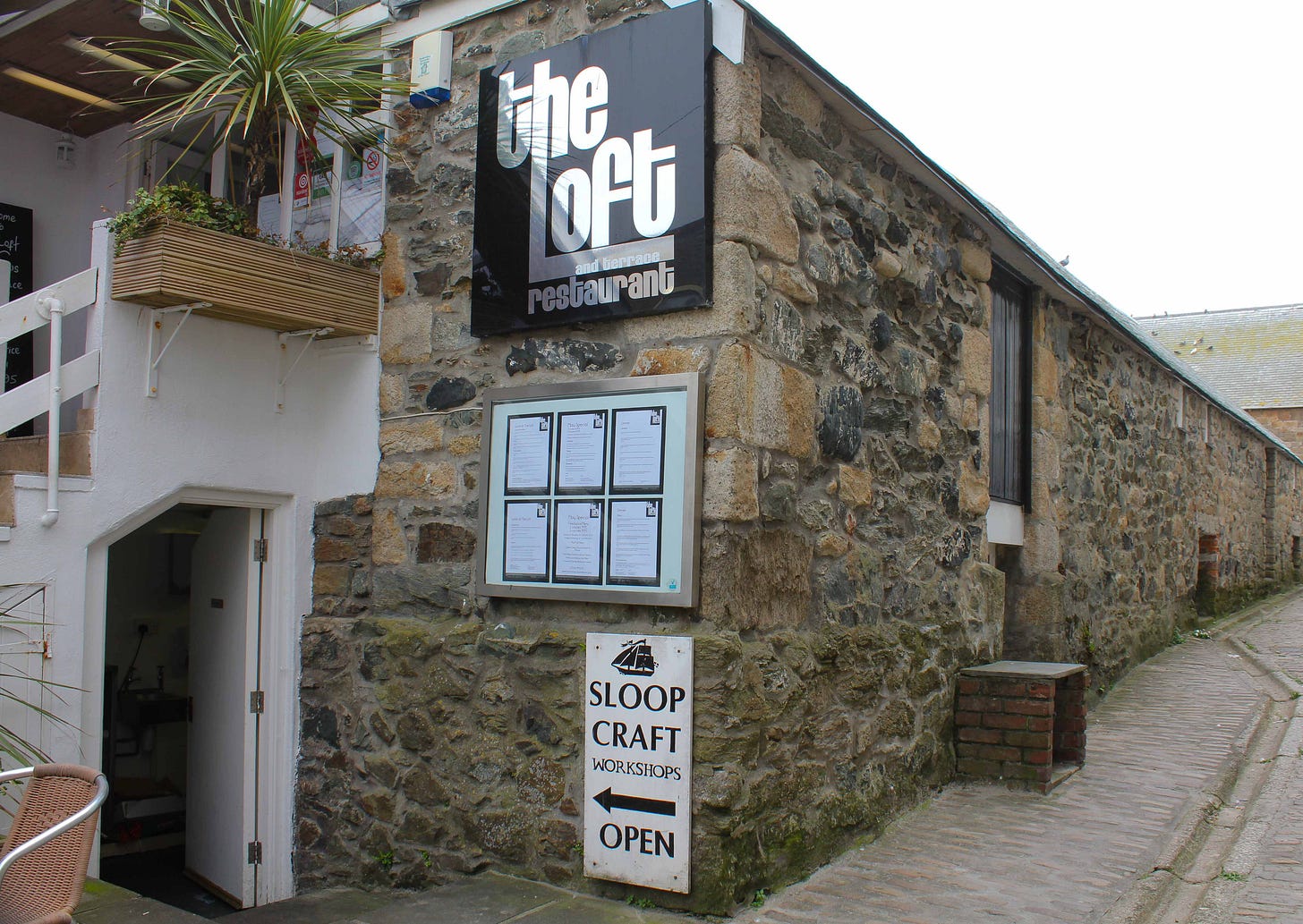Pilchard cellar converted into an art gallery, 2012. Photo: Lesley Lawson.
In days gone by, pilchards were the “silver darlings” of St Ives, supplying “meat, money and light all in one night”. (Meaning food, incomes and lamp oil.)
All my St Ives ancestors were involved, in some way, in this enterprise. One of my favourite relatives was Margaret Thomas (1797-1874), great-grandmother to my grandfather Samuel Roach.
In her early 20s she married a sailor, John Roach and gave birth to five children, the eldest being my great-great-grandfather (named John, naturally). They lived uneventfully in a small cottage in Downalong. John was doing well as a fisherman and he and his brother Samuel even managed to buy a share in a small boat. But good fortune was not to last, husband John died at the age of 36 years when their youngest child was one year old. Though I have been unable to discover the cause of his death, it was likely to be cholera, which killed many villagers in that year. The St Ives records show that, in the same year, a “poor woman” named Margaret Roach was admitted to the Penzance Dispensary.
Remarriage
Margaret recovered and seven years later she married another sailor, ten years her junior. When William was not at sea, he helped her to run the Sloop Inn, a pub on the wharf that catered to sailors and visitors alike. This pub was rumoured to be a smugglers’ den with secret passages to the shore, though when I visited in 2012, the landlord denied it all.
The Sloop Inn, built in the fourteenth century, is one of England’s oldest surviving pubs; the low ceilings and doors, signifying the short stature of people in the past.
The Sloop Inn, 2012. Photo: Lesley Lawson.
Margaret and family lived next to the pub in Pudding Bag Lane, for some 20 years. But tragedy struck again when she was widowed for the second time.
Her husband and helpmate gone, Margaret relilnquished the pub and moved to a cottage in Norway Lane, a few houses away from her eldest son (John). Her household consisted of her grandson (John) and granddaughter, along with two young fishermen. Always a full house, it was still necessary for her to work. The 1871 census notes her occupation as “fish curer”. This was the year of a bumper fish catch and the whole community came out to help. and including Margaret who by now was 73 years old.
Nimble hands
Fish salting or curing took place in open-air fish cellars owned by local businessmen. It was stinky, gruelling work, for which women were paid three pence per hour—along with a ration of brandy, bread and cheese every six hours.
Fishermen and fish curers outside a fish cellar, 1871.
In 1851, English writer Wilkie Collin’s gave his distinctly gendered impressions of the goings on in the fish cellars after a catch:
“First of all we pass a great heap of fish lying in one recess inside the door, and an equally great heap of coarse, brownish salt lying in another. Then we advance farther, to get out of the way of everybody… and see a whole congregation of the fair sex screaming, talking, and—to their honour be it spoken—working at the same time, round a compact mass of pilchards which their nimble hands have already built up to a height of three feet, a breadth of more than four, and a length of twenty.
“Here we have every variety of the ‘fairer half of creation’ displayed before us, ranged round an odoriferous heap of salted fish. Here we see crones of sixty and girls of sixteen; the ugly and the lean, the comely and the plump; the sour-tempered and the sweet—all squabbling, singing, jesting, lamenting, and shrieking at the very top of their very shrill voices for “more fish,” and “more salt;” both of which are brought from the stores, in small buckets, by a long train of children running backwards and forwards with unceasing activity and in bewildering confusion. But, universal as the uproar is, the work never flags; the hands move as fast as the tongues; there may be no silence and no discipline, but there is also no idleness and no delay. Never was three-pence an hour more joyously or more fairly earned than it is here.”
Margaret would no doubt have been one of these “crones” until her death, age 76 years.
The Loft Restaurant, Norway Lane 2012. Photo: Lesley Lawson.
Margaret Thomas-Roach-Francis was typical of the women of her time. There are no photographs or letters, nor memorials to her life of nurturing, bereavement and hard graft. Except this one.
When I visit St Ives in 2012, I search for Margaret’s spirit in vain. Instead, I eat local mussels in a restaurant in Norway Lane, above the cottage where Margaret lived with her family, and I visit an art gallery in what once was a fish cellar where Margaret and her friends cured the pilchard catch.








So interesting. i also have Roach ancestors from Cornwall but mine lived around Crantock.
Memories are made of this...
One of my favourite poems:
When I am dead
Cry for me a little
Think of me sometimes
But not too much.
Think of me now and again
As I was in life.
At some moments it’s pleasant to recall
But not for long.
Leave me in peace
And I shall leave you in peace
And while you live
Let your thoughts be with the living.
Poems and Words of Comfort